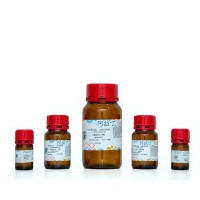Target Validation Using RNA Interference in Solid Tumors
互联网
互联网
相关产品推荐

PRAME/PRAME蛋白Recombinant Human Melanoma antigen preferentially expressed in tumors (PRAME)重组蛋白Opa-interacting protein 4 ;OIP-4Preferentially expressed antigen of melanoma蛋白
¥1500

全能型植物RNA提取试剂盒 (DNase I),阿拉丁
¥1197.90

过氧化物酶 来源于辣根,9003-99-0,Type XII, essentially salt-free, lyophilized powder,≥250 units/mg solid (using pyrogallol),阿拉丁
¥743.90

氧化铟锡,50926-11-9,≥99.99% metals basis, sputtering target, diam. × thickness 3.00 in. × 0.125 in.,阿拉丁
¥8160.90

ANO1/ANO1蛋白Recombinant Human Anoctamin-1 (ANO1)重组蛋白(Discovered on gastrointestinal stromal tumors protein 1)(Oral cancer overexpressed protein 2)(Transmembrane protein 16A)(Tumor-amplified and overexpressed sequence 2)蛋白
¥2328
相关问答

